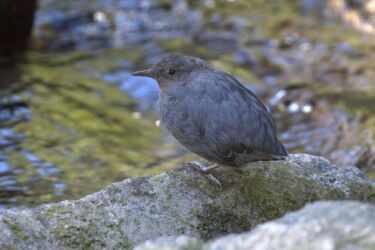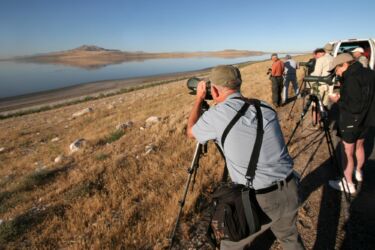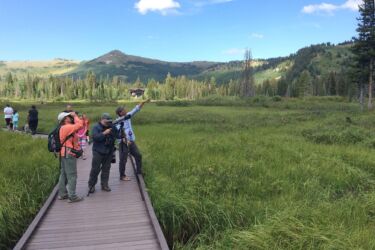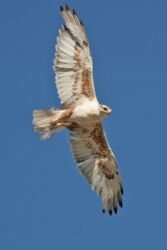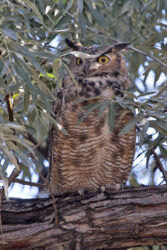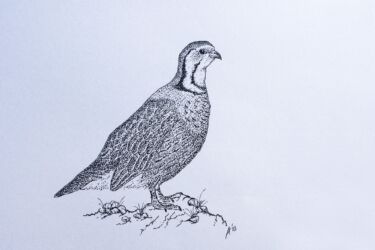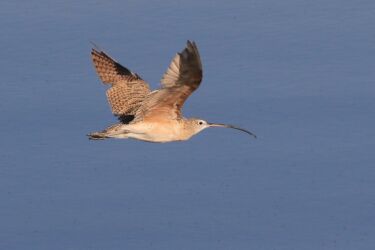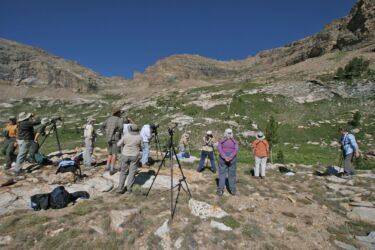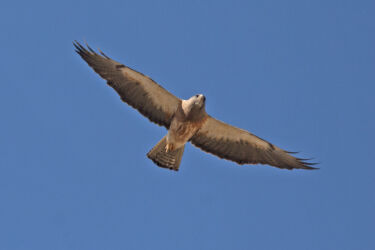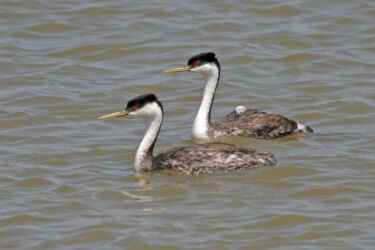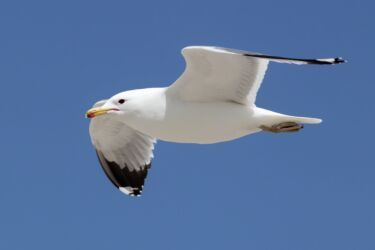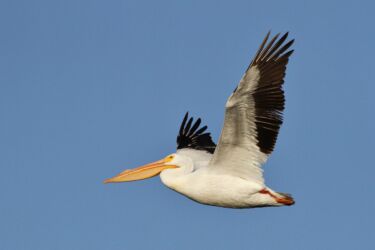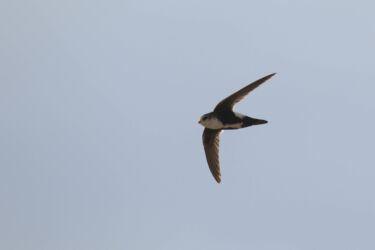TRIP REPORT: UTAH & NEVADA – 2016 August

TOUR FOCUS
TRIP LEADERS
PRIVATE TOUR OPTION
This tour is available as a private trip for any size group. The tour cost will vary with the number of people and any custom requests.
TESTIMONIALS
Trip Report by Debbie Beer with photographs by Adrian Binns
Wednesday, August 3
Fly into Salt Lake City, UT arriving late evening.
Thursday, August 4
After a quick continental breakfast, we drove north to Tremonton. We explored several miles of dirt road, sighting several Swainson’s Hawks, Northern Harrier, Horned Larks, Western Meadowlarks, and multiple Loggerhead Shrikes perched on fence posts and shrubs. We kept an eye on low smoky fires burning across nearby ridges, and were eventually turned back by local fire crews containing the blazes.
We drove a few miles north and slowed to ogle groups of Western Kingbirds on wires near the highway junctions. We birded an area recently scorched by fire on one side of the road, with green scrubby vegetation on the other. We marveled at the giant size of a “grader” truck that had gone before us, demolishing a wide swath of scrub on both sides of the dirt track to create a fire break.
Swainson’s Hawks soared low over the rocky landscape. A pair of Burrowing Owls stood on rocky piles. We saw numerous Loggerhead Shrikes, Sage Thrashers, and Western Meadowlarks. We heard Chukars, then finally picked them out on a rocky slope, standing in plain sight.

Ferruginous Hawk
After a nice picnic lunch in the town park of Snowville, we set our sights west, and turned onto Route 30, “raptor alley,” for the drive to Nevada. We stopped almost immediately to admire nearly a dozen Ferruginous Hawks (left) hunting and circling over a field outside of town. Pronghorn Antelope foraged at the edge of the field. Swainson’s Hawks perched on just about every highway pole (we counted 27 in about 1.5 hours), and kestrels hovered over the landscape. A Sandhill Crane was spotted in the distance.
By late afternoon we arrived at Elko, Nevada, a town larger than expected! We checked into the hotel and grabbed dinner at a local pub with a wonderful selection of micro-brews. We enjoyed a beautiful sunset over the Humboldt River, wandering riverside trails to find a few California Quails, Black-crowned Night-herons, American Avocets, White-faced Ibis, a small flock of Lark Sparrows, Lesser Goldfinch, and Eurasian Collared- doves.
We retired early in preparation for a long day tomorrow!
Friday, August 5, 2016
Alarm clocks sounded very early on the day of our much-anticipated trek for Himalayan Snowcock. We drove about an hour in sleepy silence to the trailhead at the end of “Lamoille Canyon Scenic Byway” nestled in the Ruby Mountains. We donned backpacks and headlamps, and started the steep ascent at 3:55 am. The fittest in our group reached our vantage point above Island Lake in about an hour; Adrian and I took an extra hour to navigate the high elevation switch backs. As daylight broke, we were dazzled by the shimmering green lake, and towering cliffs encircling the space above it. At elevation 9,800 feet, we reached a comfortable spot for scanning, assembled scopes, and added another layer amid the cold wind.
A Prairie Falcon appeared briefly at the cliff edges, and we heard Snowcocks calling as the sun rose, but we could not find them. Ground birds entertained us in between scanning the cliff sides relentlessly. We watched Broad-tailed Hummingbirds fight over montane flowers, while Dark-eyed Juncos and Mountain Bluebirds moved actively around vegetation. 2 Rock Wrens sang and flew across boulders, and several Red-shafted Flickers flew amongst gnarled conifers. We picked out 8 Black Rosy-finches moving along the scree very high on the cliff edges – so distant that they looked like black specks. Mountain goats looked tiny against vast jagged walls.

Spirits were low in the 9 o’clock hour, but we perked up when the snowcocks called again, renewing our determination to find them. Adrian finally spotted one at 10:15 am, about 100 feet below the top of the cirque (above). We soon realized there were two birds, poking their way across the “star-shaped rock slab” and under the “giant boulder.” Smiling with success, we decided to make our way back down. This time, we took photos at every switchback and straight-away, captivated by the stunning mountain landscape filled with beautiful flowers, butterflies, Golden-mantled Ground Squirrels, chipmunks and birds. We added Dusky Flycatcher, Clark’s Nutcracker, Western Wood-peewee, White-crowned Sparrow, Cassin’s Finch, and Pine Siskin to our morning list.
On our way back to town, we stopped for good looks at a Lewis’s Woodpecker that had shot across the road in front of us. Driving up and down the town streets of Lamoille, we checked yard feeders to find a Black-chinned Hummingbird, Western Tanager, Pine Siskin, and a half-dozen Brewer’s Blackbirds.

South Fork Reservoir
We welcomed lunch and an afternoon nap – an extended one for Deb! The rest of us headed out to the extensive South Fork Reservoir (left). Various stops along the perimeter provided a wonderful mix of shorebirds, waterfowl and scrub birds. Amongst the latter Brewer’s and Lark Sparrow, Say’s Phoebe, California Quail, Sage Thrasher and Yellow-headed and Brewer’s Blackbird. Waders included White- faced Ibis, Marbled Godwit, Western Willet and Long-billed Dowitcher with smaller waders Wilson’s Snipe, Greater Yellowlegs, Stilt, Spotted, Western, Semi-palmated and Baird’s Sandpiper, and Wilson’s and Red-necked Phalarope for comparison. Waterfowl were well represented with Northern Shoveler, Green-winged Teal, Northern Pintail, Ruddy Duck, Redhead, Canvasback, four species of grebe Pied-billed, Eared, Horned and Western, along with majestic American White Pelicans. Amongst the birds patrolling over the water California and Ring-billed Gull’s, Forster’s Terns, Barn and Tree Swallows along with the occasional Bald Eagle.
In the late afternoon light we made a final stop at the Last Chance Road Gravel Pits. The waterfowl show continued with closer views of Redheads, Canvasbacks, Eared Grebe, Common Loon and Trumpeter Swan. At dusk a dozen Common Nighthawks (below) hawked over the pits.

Common Nighthawk
Saturday, August 6, 2016

Black-throated Gray Warbler
Today we headed back east towards Salt Lake City, making several stops along the way. We spent nearly 2 hours exploring a scrub- habitat area near Wells-Pequop. A lively assortment of birds included Gray Flycatcher, Plumbeous Vireo, Bushtits, Black-throated Gray Warblers (left), and numerous Brewer’s Sparrows jumping in shrubs. We tracked down one Woodhouse’s Scrub-Jay.
We couldn’t resist a brief detour at the famed Bonneville Salt Flats, marveling at the bright white salt surface, and watching a few vehicles zoom around a controlled course. This unique 40-square- mile area of public lands managed by the Bureau of Land Management, is home to land speed records by cars, trucks, and motorcycles. Racing dates to the early 1900’s and continues today.
By mid-afternoon, we entered Big Cottonwood Canyon in the Wasatch Mountain range, just a few miles southeast of Salt Lake City. We joined many other outdoor enthusiasts – cyclists, hikers, paddlers, day-trippers – in exploring public areas of the canyon.
 The Silver Lake Visitors Center featured a lovely boardwalk (right) that looped about 1.5 miles through tall conifers, marsh grasses and sparkling lake. We sighted Olive-sided Flycatcher, Stellar’s Jays, Black- capped and Mountain Chickadees, White-crowned and Lincoln’s Sparrows, and a lively flock of 20+ MacGillivray’s Warblers foraging amongst reeds.
The Silver Lake Visitors Center featured a lovely boardwalk (right) that looped about 1.5 miles through tall conifers, marsh grasses and sparkling lake. We sighted Olive-sided Flycatcher, Stellar’s Jays, Black- capped and Mountain Chickadees, White-crowned and Lincoln’s Sparrows, and a lively flock of 20+ MacGillivray’s Warblers foraging amongst reeds.
Passing through a well-groomed neighborhood at the base of Neff Canyon, we stopped at a cluster of trees to observe a flurry of avian activity – a bevy of California Quail, Spotted Towhee, Black-headed Grosbeak, Stellar’s Jay and a Woodhouse’s Scrub-Jay.
It was finally time for dinner, and reviewing plans for tomorrow’s targets.
Sunday, August 7, 2016

Bridal Veil Falls
Our first stop of the day was most successful, with great looks at Black Swift at the Bridal Veil Falls (right) overlook at 7:10 am! This put us in great mood to visit and get photos with “Big Foot” (his bronze stand-in) at the nearby Provo Canyon Outfitters. Of course we ticked a few birds too, including Cedar Waxwing, Yellow Warbler, and Belted Kingfisher.
Continuing northeast, we saw a dozen American White Pelicans roosting on the edge of the expansive Heber City Reservoir, and noted a flock of 20 White-faced Ibis foraging in a wet field along the highway.
By 9:30 am, we reached the Uinta Mountains and stopped for a quick restroom break. While admiring gorgeous scenery, we noticed 2 Red Crossbills feeding in the tops of nearby conifers!

Three-toed Woodpecker
At the Mirror Lake and Campground, we took a leisurely stroll along short trails. We found plenty of bird activity – Red-breasted Nuthatch, Orange-crowned Warbler, Chipping Sparrows, Pine Grosbeaks, Cassin’s Finch – but had not located our target Three-toed Woodpecker (left). Just as we were preparing to drive away, we saw the family of woodpeckers noisily jumping around the campground entrance! We gleefully watched them jump from tree to tree, adults caring for at least one juvenile inside a cavity.
After lunch we checked into our hotel in Layton then headed to Bear River Migratory Bird Refuge (below) in Brigham City.

We spent a wonderful afternoon exploring wetlands and waterfowl habitat of this expansive 74,000 acre National Wildlife Refuge. At the start of the 12-mile wildlife drive, we enjoyed brilliant looks at Western and Clark’s Grebes, learning the I.D. points to separate these similar species. We counted hundreds of each, floating and diving in waterways. A family of Ring-necked Pheasants stalked through underbrush, while Western and Eastern Kingbirds sallied from perches to catch insects. American Coot, Black-necked Stilt (below), American Avocet, White-faced Ibis, and Great White Pelicans, Long-billed Dowitchers were seen in large numbers. Yellow- headed Blackbirds flushed from marsh reeds. Tree, Bank, Barn and Cliff Swallows swirled endlessly overhead. Numerous Snowy Egrets hunted with Great Blue Herons and patient Black-crowned Night-herons. California and Franklin’s Gulls mixed with Caspian and Forster’s Terns. Savannah Sparrows and Marsh Wrens hopped along reedy edges. Cinnamon Teal were the most abundant waterfowl, along with a few Northern Pintail, Northern Shoveler, Ruddy Duck, and Redhead.

Black-necked Stilt
We decided to make a second attempt at Grey Partridge in White’s Valley, and drove back to the dusty roads we had explored on our first morning. Unfortunately, no partridges were found, but we enjoyed Horned Larks, Lark Sparrow, Western Meadowlarks, a couple of Northern Harriers and a cooperative Loggerhead Shrike in the setting sun.
After a quick dinner, we drove to East Canyon for late-night owling. Our ambition was rewarded with excellent experiences of a squealing Long-eared Owl, and at least 3 calling Flammulated Owls, one tantalizingly close! It was well after midnight by the time we got to bed, but worth every minute of the exciting birding.
Monday, August 8, 2016

Eared Grebes
We finished our short, whirlwind trip with a visit to Antelope Island State Park. Encompassing 28,000 acres, Antelope Island is the largest of 10 islands located within the Great Salt Lake. Access is via a long scenic causeway spanning the vast salt lake. We were awed by the spectacle of thousands of Eared Grebes (right) as far as the eye could see, with several leucistic individuals among them. Groups of Wilson’s and Red-Necked Phalaropes paddled around the grebes, giving good opportunity for species comparison. Hundreds of American Avocets and Black- necked Stilts foraged on their long legs. Millions of brine flies blackened the water’s edge in a living mass of food for hungry birds. Long-billed Curlews, Franklin’s and California Gulls chased the flies ceaselessly.

American Bison
On Antelope Island, we meandered along rocky trails, happily photographing many butterflies, dragonflies including the beautiful Variegated Meadowhawk, and large spiders in dew-laden webs. We saw wild Pronghorn, Mule Deer, and a Coyote. The Visitors Center held a fascinating collection of artifacts, photos, and stories about early explorers discovering the region. People like John Fremont and Kit Carson left their mark in the mid 1800’s. Bison (left) were introduced to the island in the 1890’s, and roam freely there, with an annual round-up to manage their populations.
At the southern end of the island, we wandered around Garr Ranch, one of the oldest, continuously-occupied ranch homes in the state. Volunteers greeted us warmly, offering guided tours and information.
We watched Black-chinned and Broad-tailed Hummingbirds visiting feeders, and followed a flock of passerines moving through cottonwood trees, including Wilson’s and Yellow Warblers, Western Tanager, Say’s Phoebe, and Lark Sparrows. We were fortunate to find three Great Horned Owls roosting high under a maintenance structure; they barely opened one eye as we admired them through scopes and cameras.
Sadly we had to catch mid-afternoon flights back home. What a wonderful short trip with great birds and experiences!







